Axis vs. AA Guns: History of American Anti-Aircraft Weapons
April 12th, 2022
7 minute read
Even from the first moments of America’s sudden involvement in World War II, U.S. anti-aircraft (AA) gunners were in the thick of the fight. John W. Finn, US Navy Chief Aviation Ordnanceman, won the Medal of Honor during the Japanese attacks on Pearl Harbor, December 7, 1941. As Japanese planes attacked his post at Naval Air Station Kaneohe Bay, he fought back from an exposed .50 caliber machine gun stand. He hammered away at the strafing and bombing Japanese aircraft.
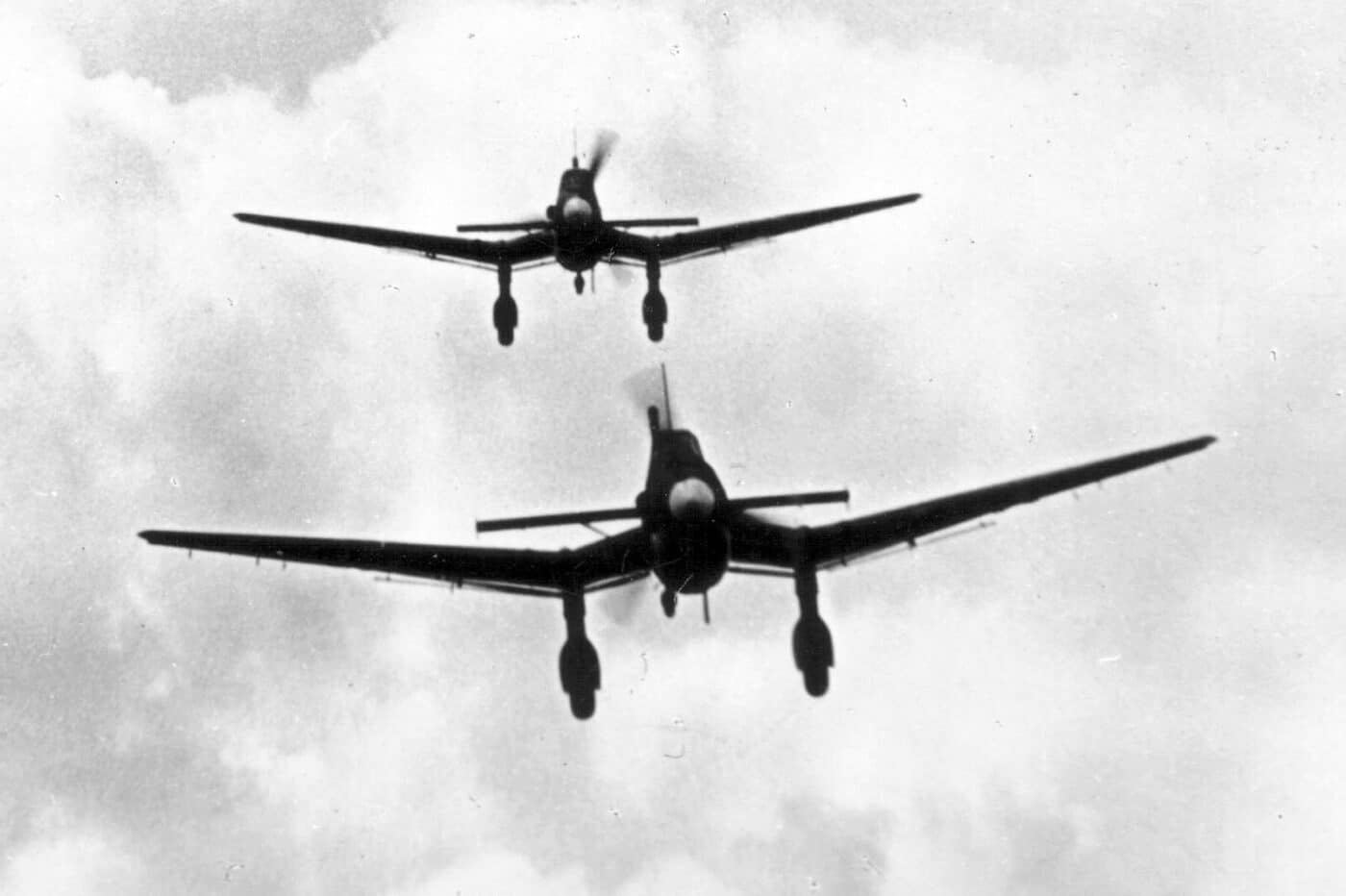
Wounded multiple times, Finn remained at his post until he was ordered to seek medical attention. With that, America joined in combat in World War II with a burst of anti-aircraft fire. The Japanese admitted to losing 29 aircraft over Pearl Harbor, many of them falling to American AA gunners.
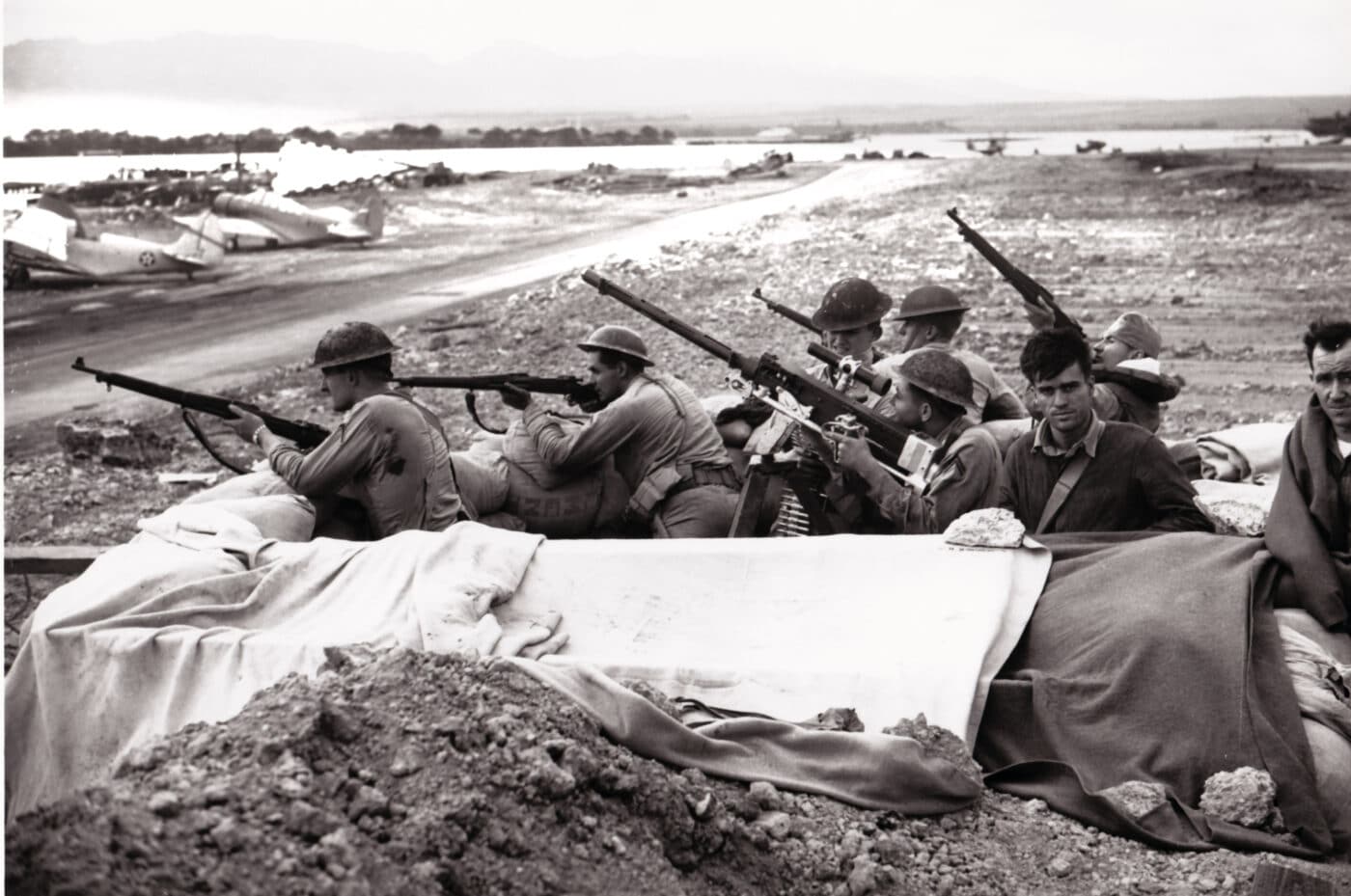
Eighteen months earlier, the U.S. military watched in shock and horror as Germany smashed through Holland, Belgium and France in just 46 days in the late spring of 1940. The German blitzkrieg moved with incredible speed in destroying the French Army, the largest force in Europe, and ejected the British from Western Europe. The image of Stuka dive bombers was fixed in the minds of America’s military planners, and AA weapons were high on the list for development.
John Browning’s Miracle
Fortunately, the U.S. had the Browning .50 caliber machine gun. Beginning in late 1917, it took John Moses Browning slightly more than a year to develop his .50 caliber machine gun. Browning commented: “One drop of genius in a barrel of sweat wrought the miracle.” Improvements were made to the gun and the ammunition, and Browning’s initial M1921 design was used on experimental basis by the Army until 1937.
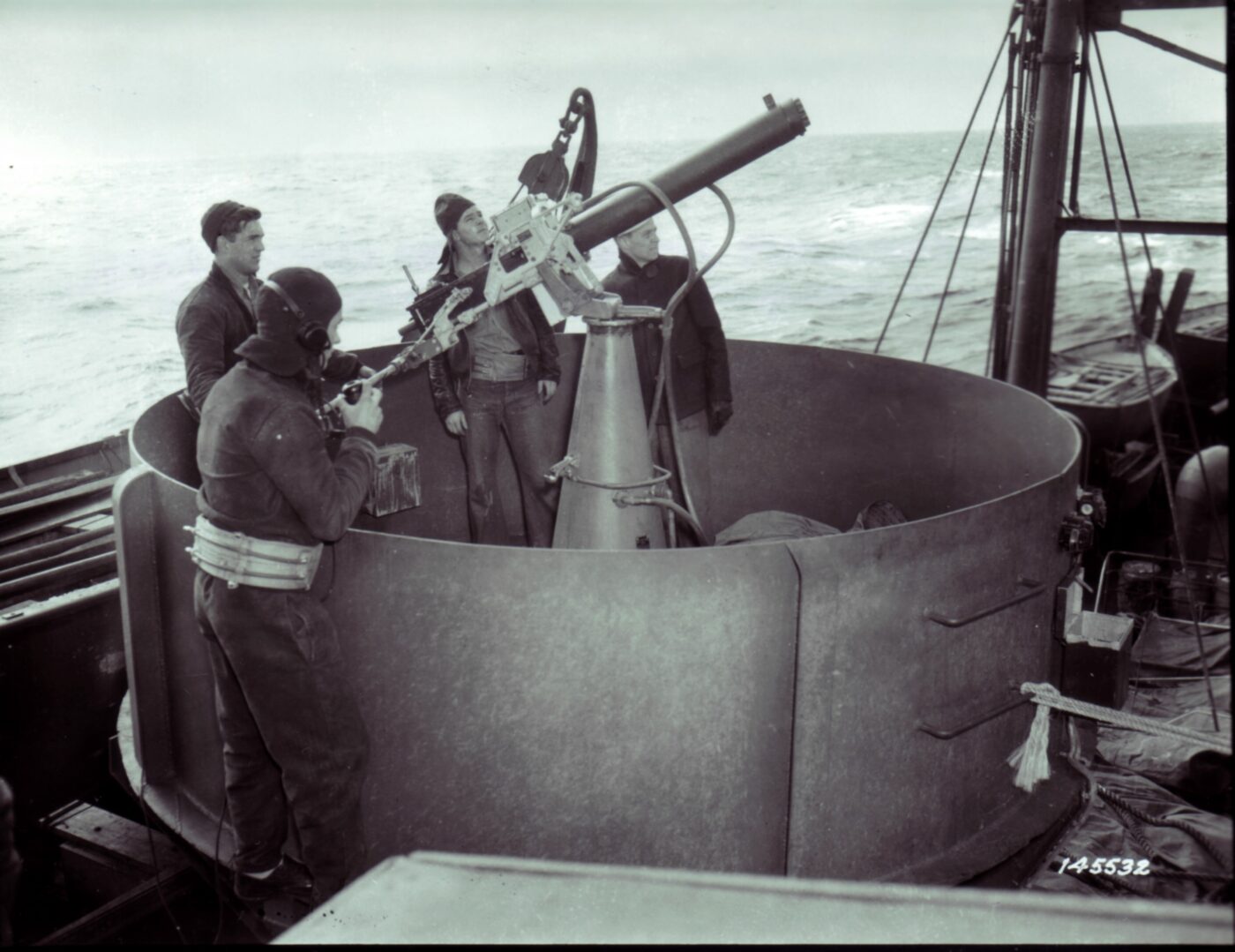
The improved Browning, designated M2, was first deployed during 1933. It was primarily used for anti-aircraft work during its career, and it remained in that role throughout World War II. The cyclic rate of the M2 was a steady 600 rounds per minute and the .50 caliber armor-piercing incendiary (API), and armor-piercing incendiary tracer (APIT) rounds were more than capable of tearing up and burning any Axis aircraft of the early war period. America entered World War II with the most powerful machine gun in the world, and the Axis powers never developed anything to match it.
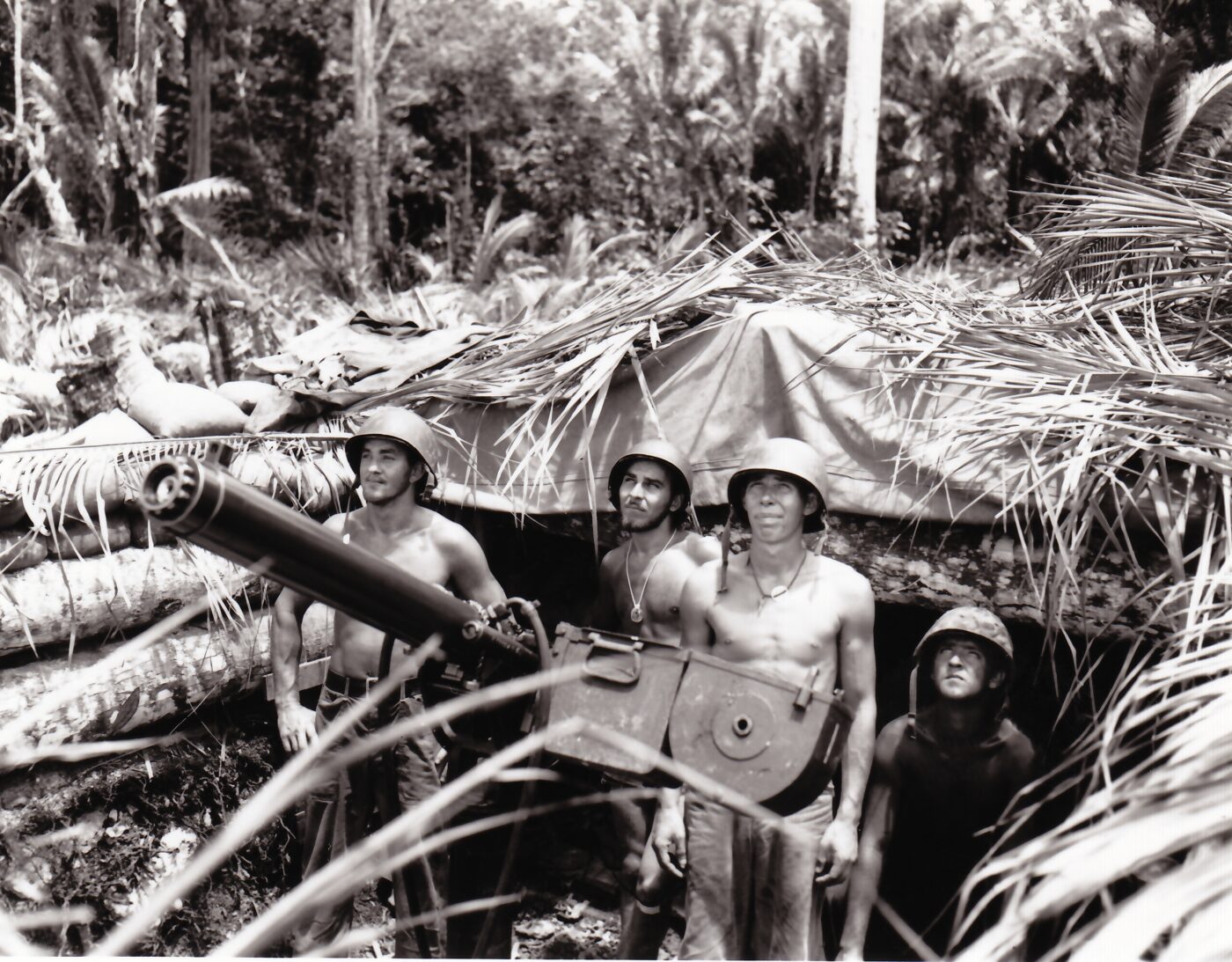
During 1942, the Browning .50 caliber AA guns saw increasing action on the high seas as U.S. ships defended convoys bound for England and the Soviet Union. In the Pacific, the fifties saw service in defense of Wake Island and the Philippines during the dark days of the war, and then helped fight through to victory at Midway and in the Solomon Islands as the tide began to turn.
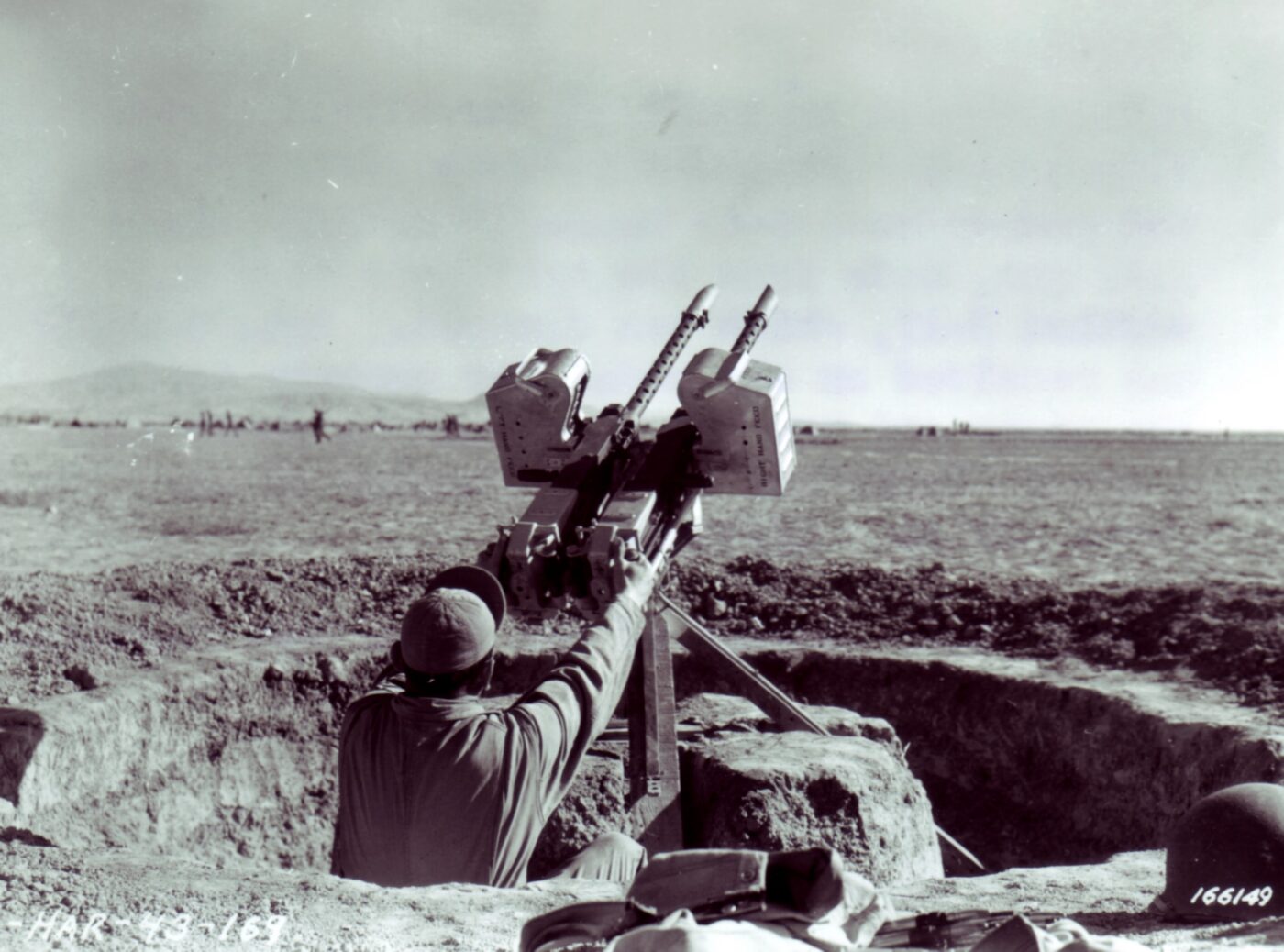
Marine, Navy and Coast Guard AA gunners bravely fought off continuous Japanese air raids until the day that Allied air superiority was commonplace in Pacific skies. In the China-Burma-India Theatre, command of the air was often in doubt, and American AA gunners were often responsible for keeping the critical Burma Road open for supplies.
Mobile AA for Cover
When American troops landed in North Africa during November 1942, control of the skies was still in doubt. Throughout the campaign in North Africa, then Sicily, and finally the invasion of southern Italy, U.S. troops had to contend with German air raids.
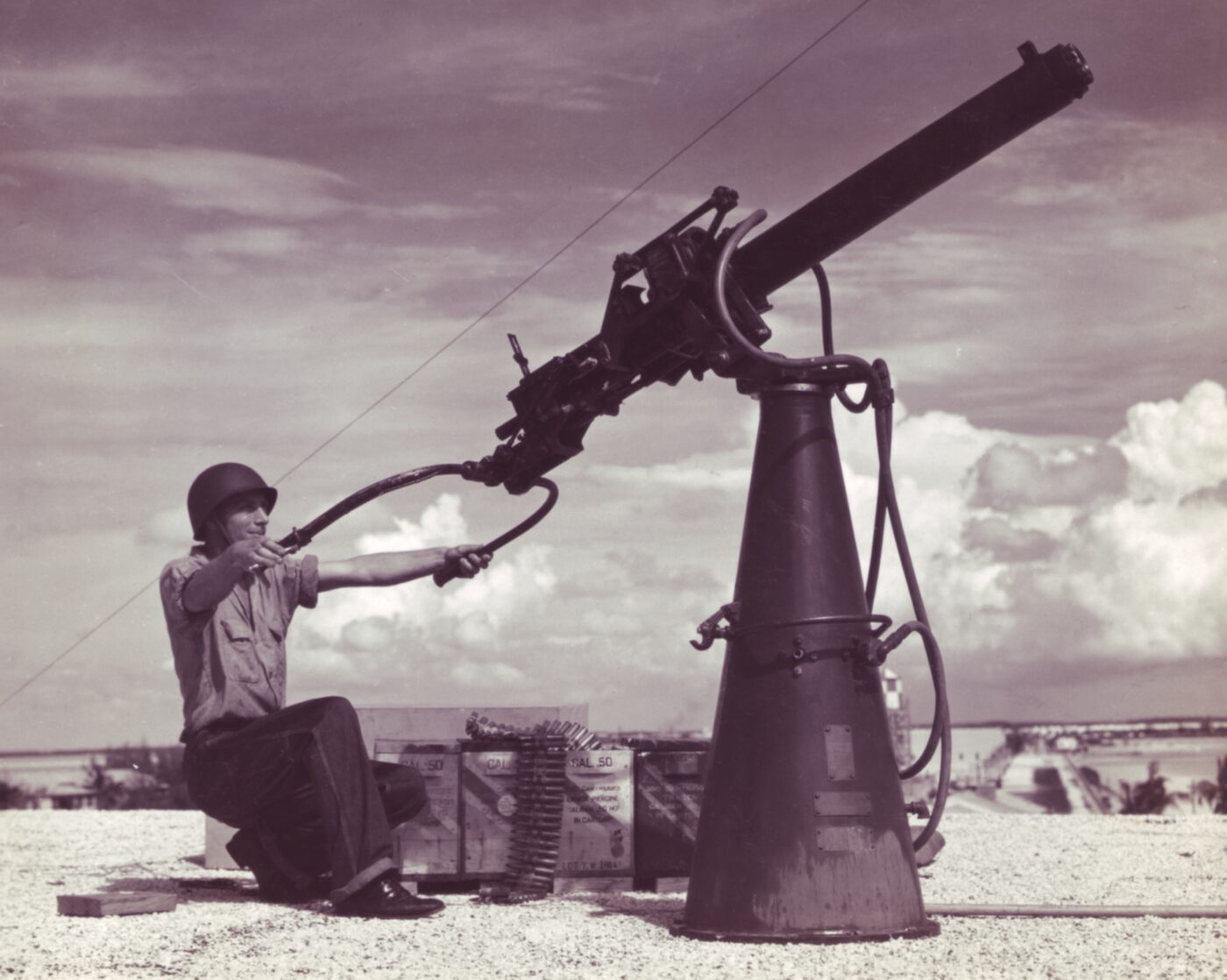
The air-cooled version of the Browning M2 (heavy barrel) was used in ever-increasing numbers and were mounted aboard almost every type of American wheeled or tracked vehicle. The M2 was also used on various AA tripods, and these mounts proved particularly heavy for the infantry to move.
Consequently the “Elevator Adapter, AA, Caliber .50 M1” was introduced. This was a simple, relatively light, AA extension for the standard M3 tripod. The M1 Elevator Adaptor was certainly a compromise, but it was effective enough that more than 80,000 were issued in World War II.
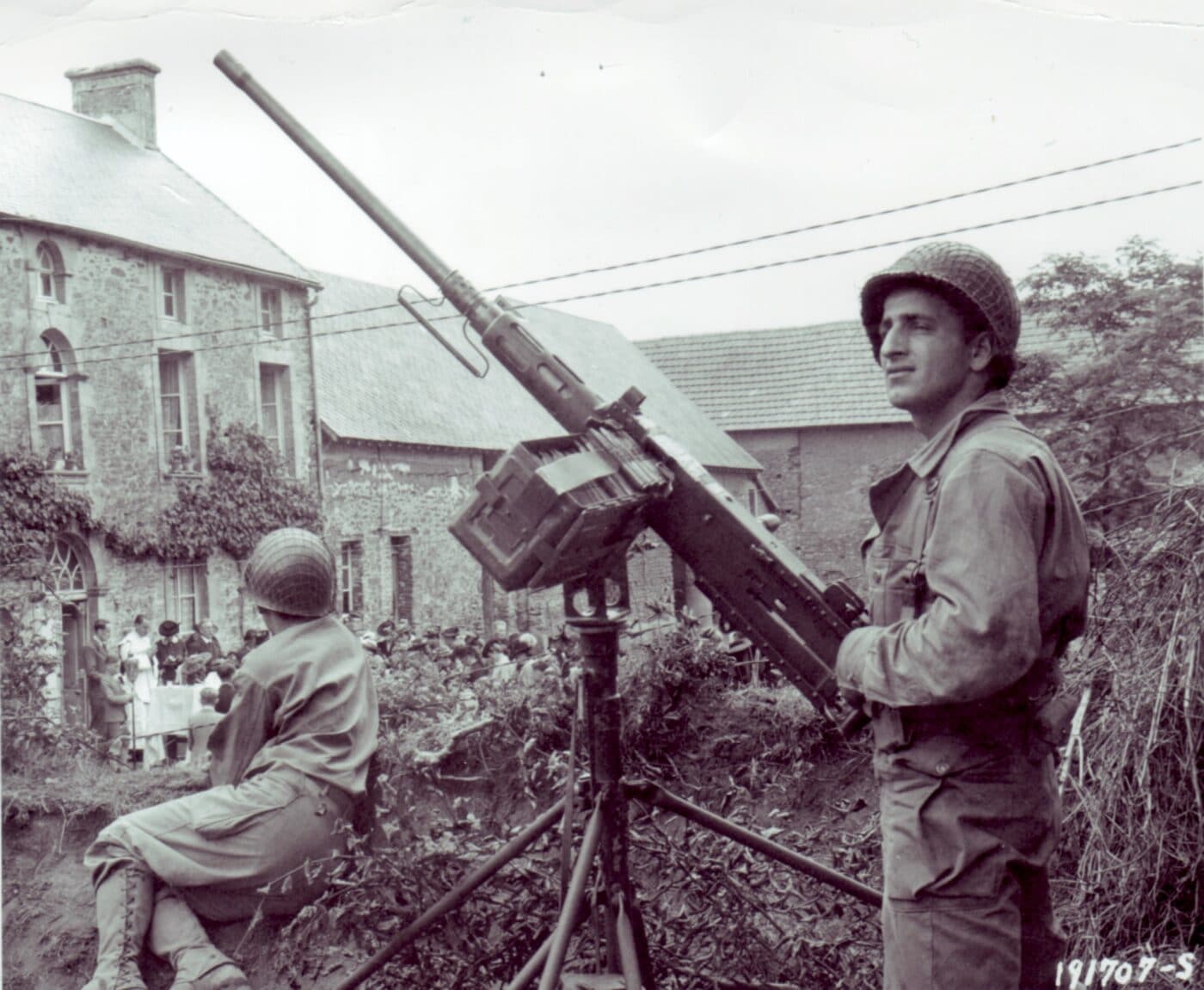
To provide AA defense for America’s fast-moving mechanized forces, the Browning .50 caliber guns were mounted aboard halftrack chassis, resulting in the M15 Combination Gun Motor Carriage and the M16 Multiple Gun Motor Carriage. The M15 coupled two M2 .50 caliber MGs with a M1 37mm automatic gun, mounted in special turret at the rear of a M3 halftrack chassis.
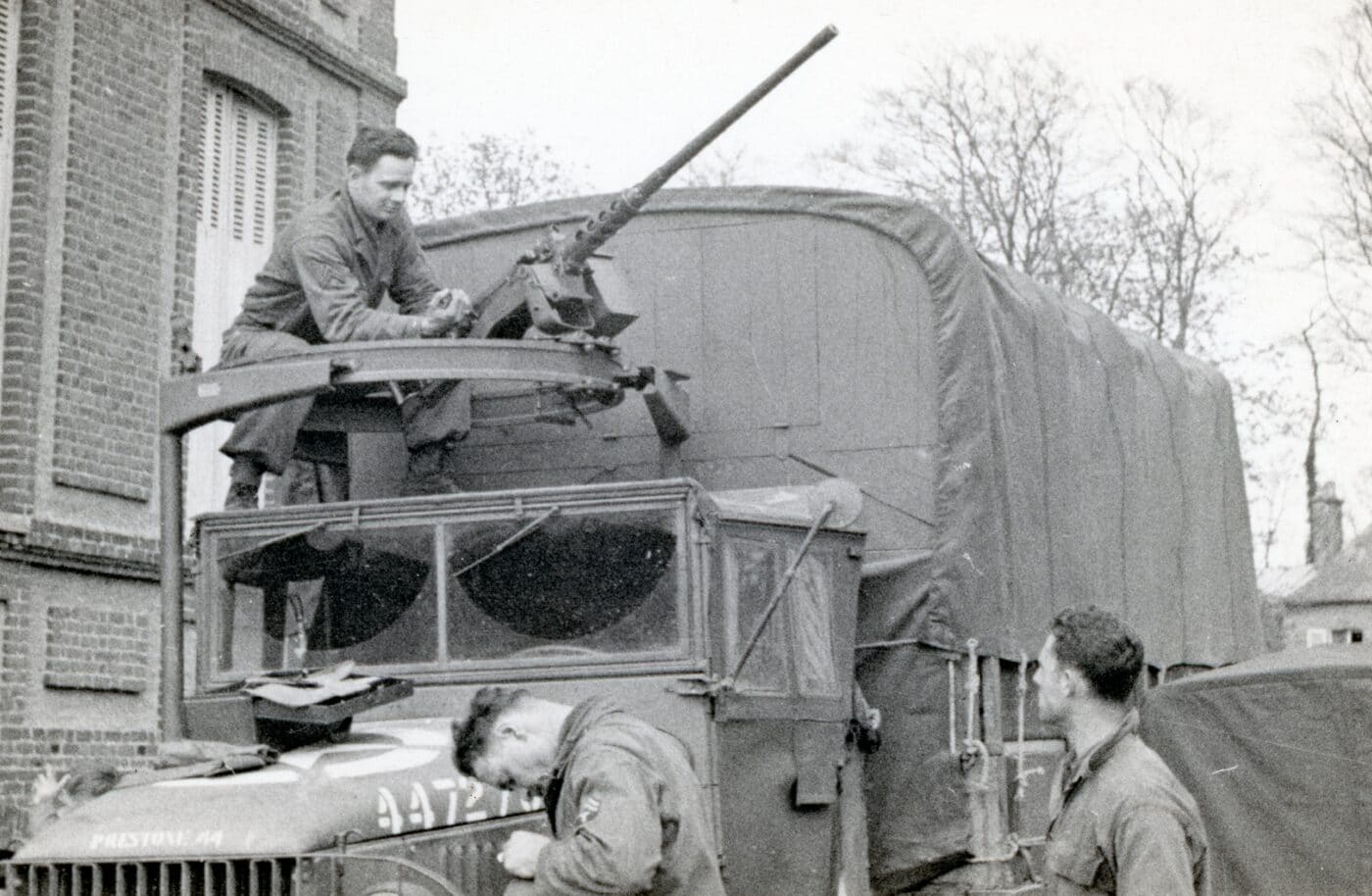
The M15 proved effective right away, with the Gun Motor Carriages credited with shooting down 39 German planes during the Battle of Kasserine Pass. The twin .50 caliber MGs often fired tracers exclusively to track targets for the knock-down power of the 37mm gun. Some after-action reports state that M15 gunners “baited” German aircraft in close by using their .50 caliber guns at too great a range, fooling the Luftwaffe strafers to approach within easy range for the 37mm M1 autocannon.
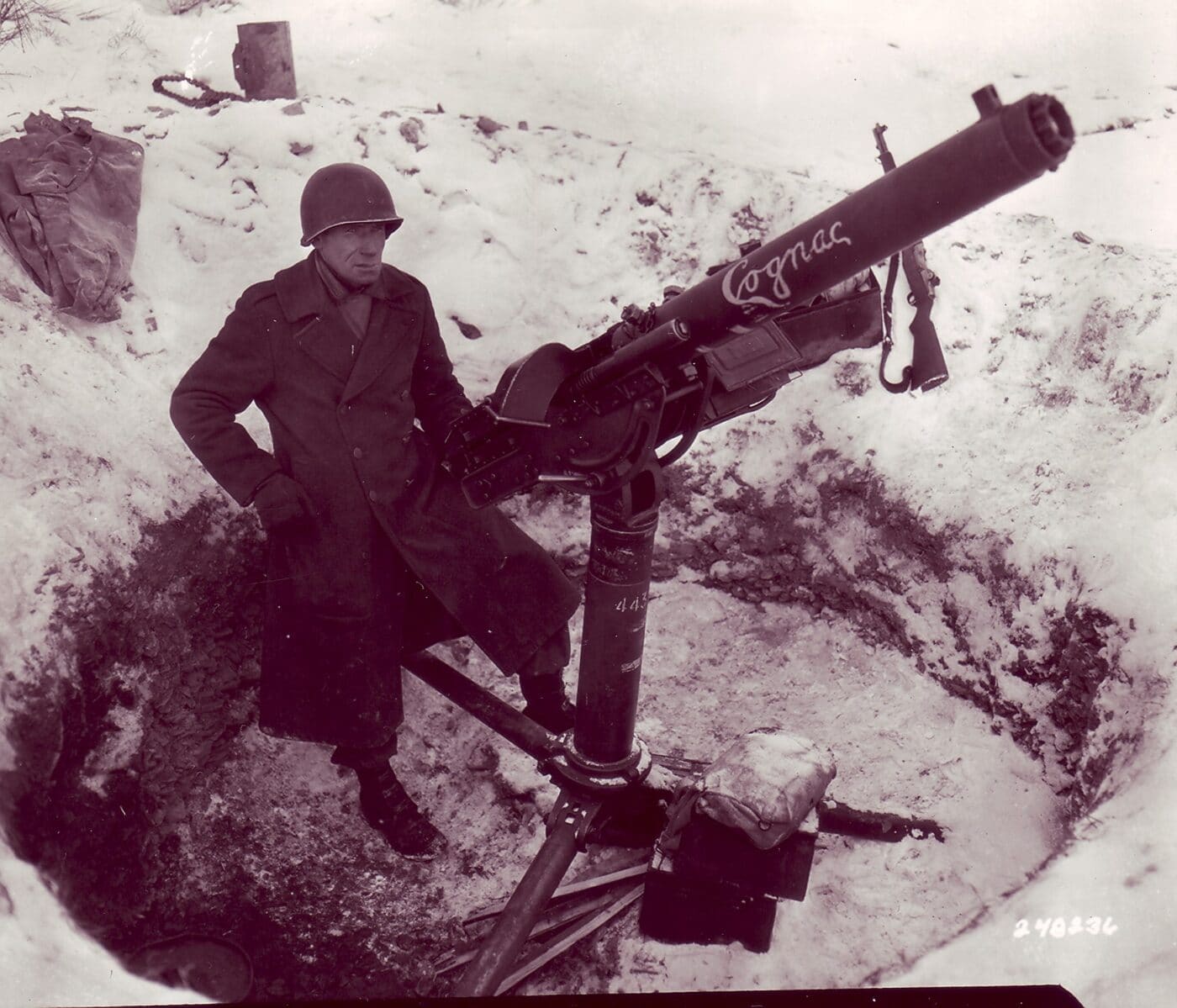
Fighting alongside the M15 was the M16 GMC, also based on the M3 halftrack chassis but equipped with the M45 Quadmount of four .50 caliber M2 machine guns. The M16 featured armored side panels that folded down to offer a wide field of fire, and the vehicles were sometimes used against ground targets. The murderous, concentrated firepower of the Maxson M45 turret earned the M16 the nickname: “The Meat Chopper”.
The M15 and M16 AA halftracks worked together from 1944 until the end of the war, and each US Anti-Aircraft Artillery (AAA) battalion was equipped with 32 of each vehicle.
The Bridge at Remagen
On March 7, 1945, the lead elements of the US 9th Armored Division entered Remagen, Germany and found the last intact bridge across the Rhine. The incredible heroics involved in the capture of the 325-meter Ludendorff railway bridge are a story for another time, but they were just the beginning of opening a direct route into the eastern portion of the Third Reich.
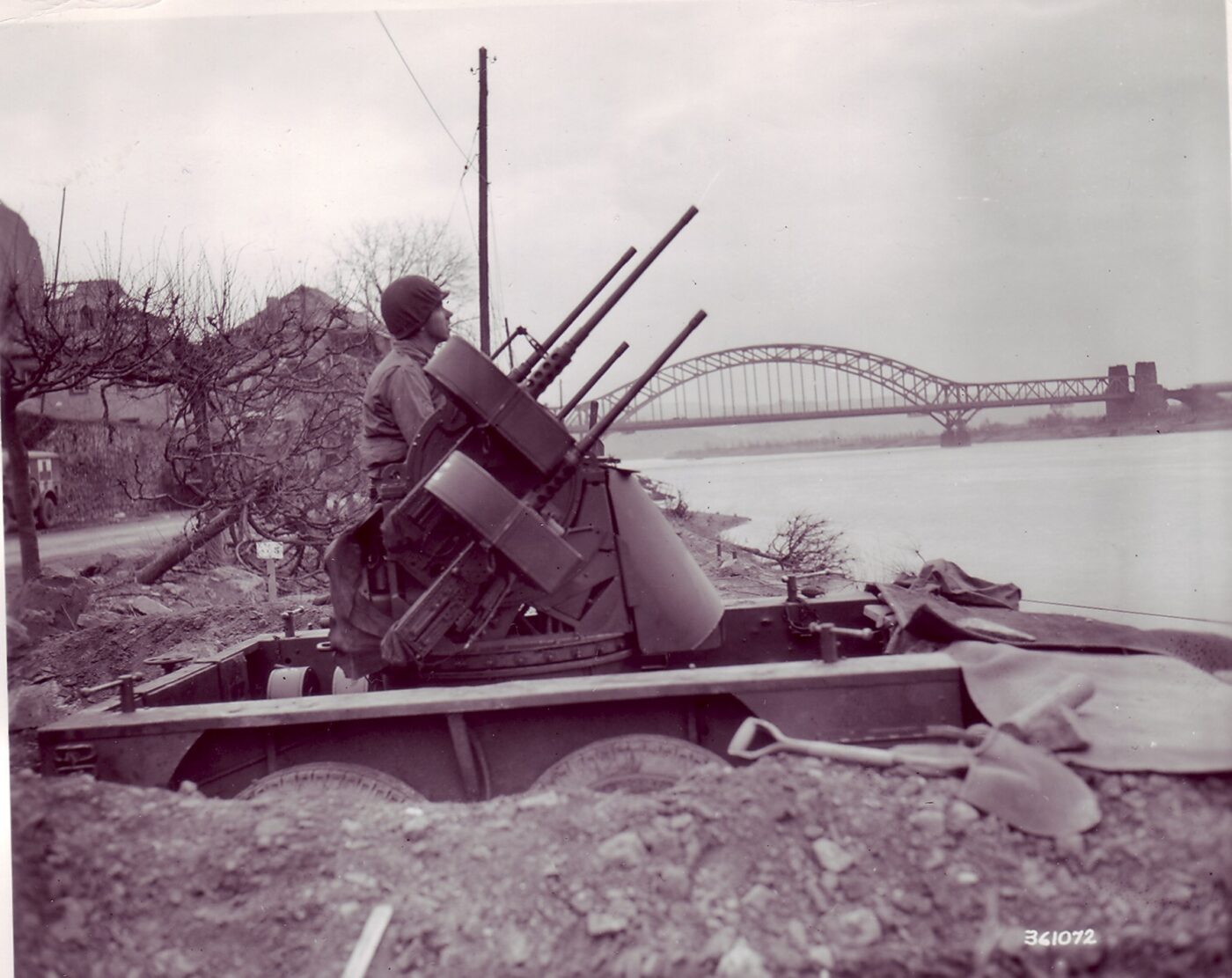
American AA units had to defend the bridge against the intense Luftwaffe attacks hell-bent to destroy it. Anti-aircraft halftracks were quickly brought up, so fast that the lead track of the 482d AAA Battalion was the thirteenth vehicle to cross the bridge. The M16s were dug in along the edge of the river, while the M15 took up positions on the high banks of the Rhine.
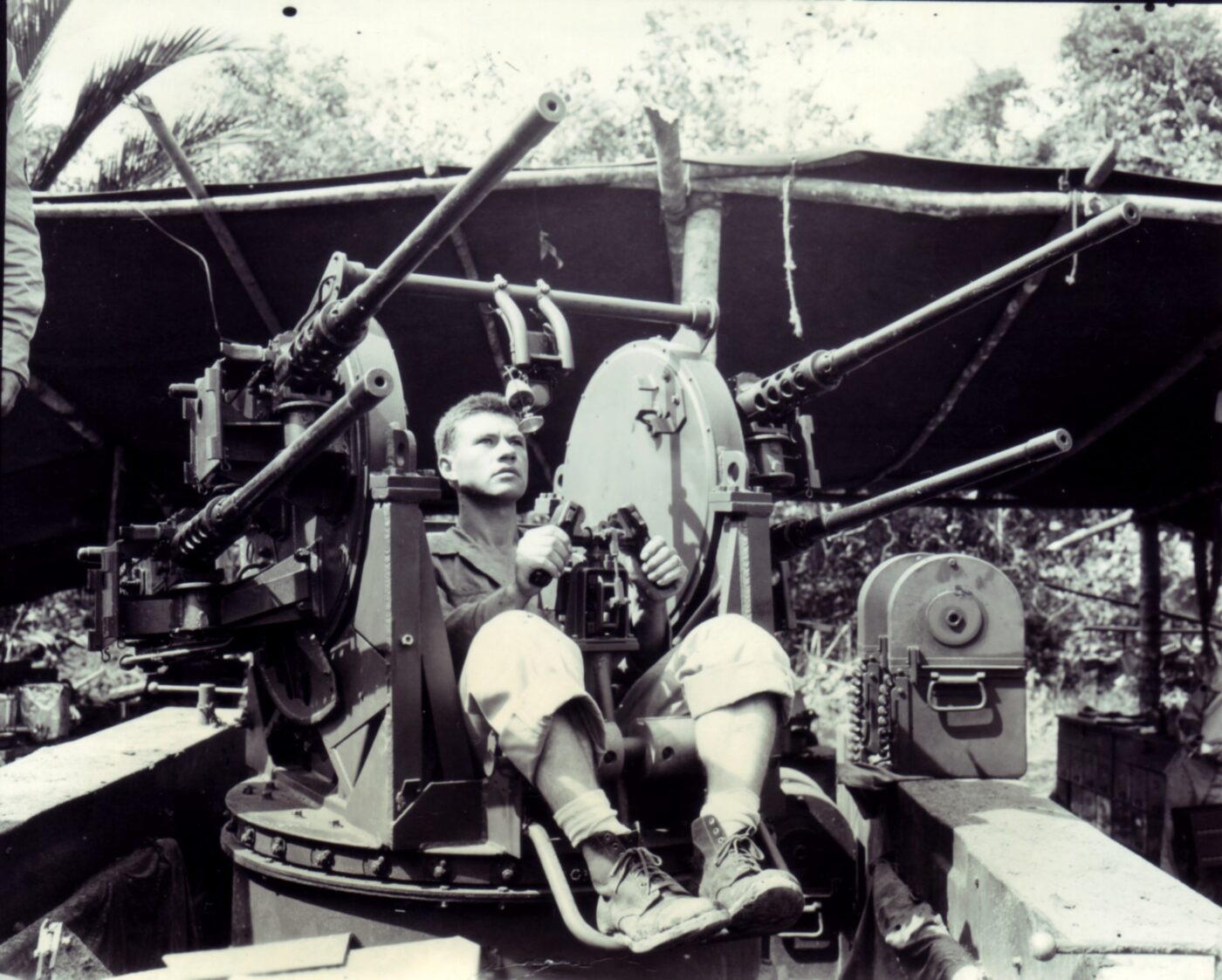
The Germans sent in every available aircraft, from the venerable Stuka to the latest Me 262 and Arado 234 jets. Regardless, the cliff-like banks of the Rhine forced the German attackers into a climb up over the ridges, and then to drop down into the valley directly into the face of massed .50 caliber fire.
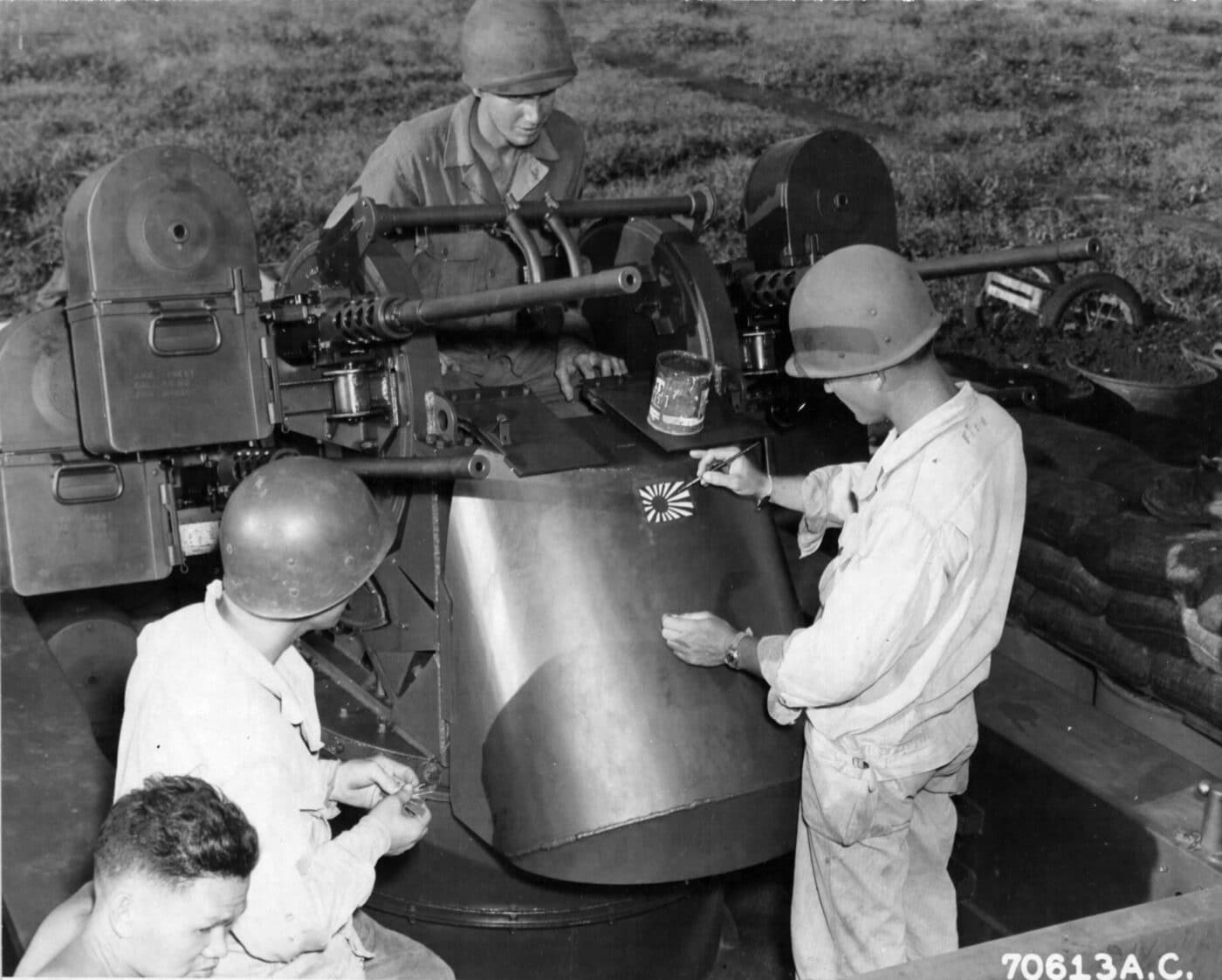
During the next three weeks, the American AA gunners defending Remagen bridge did their job with incredible tenacity. They developed a form of barrage fire and created literal clouds of .50 caliber lead in the path of the German attackers. The Luftwaffe pressed their attacks and paid dearly — 30% of the attacking aircraft were shot down, including a few jets. The ultimate tribute to the U.S. AA gunners is the fact that the Luftwaffe never scored a hit on the Ludendorff Bridge. The path to victory in Germany was wide open.
In the air and from the ground, John Moses Browning’s incredible M2 .50 caliber machine gun was the gun that shot down the Axis.
Editor’s Note: Be sure to check out The Armory Life Forum, where you can comment about our daily articles, as well as just talk guns and gear. Click the “Go To Forum Thread” link below to jump in!
Join the Discussion
Continue Reading
Did you enjoy this article?

 129
129





